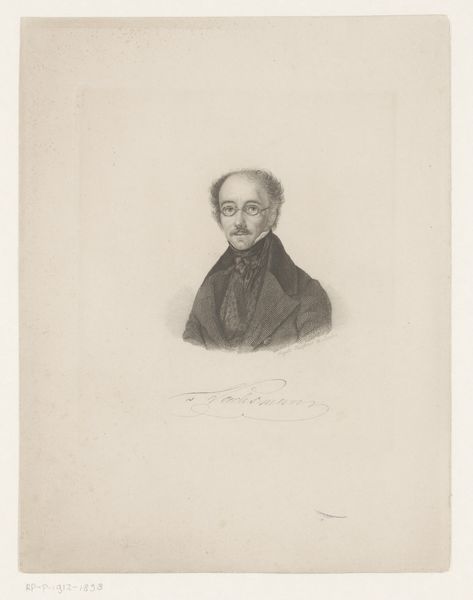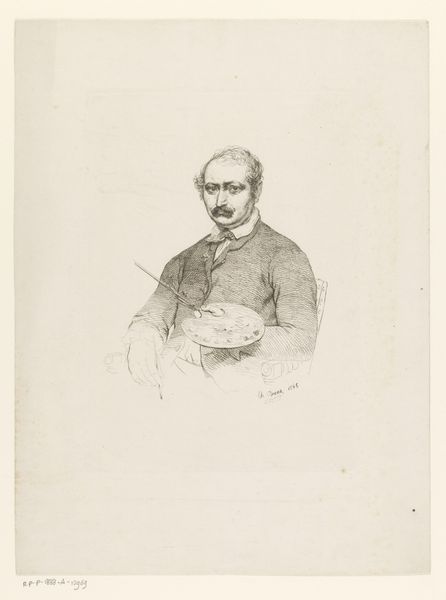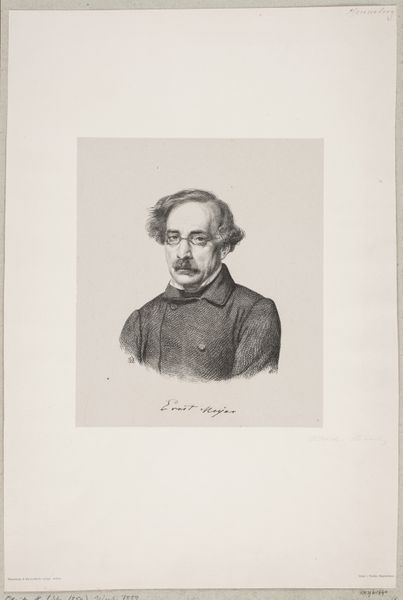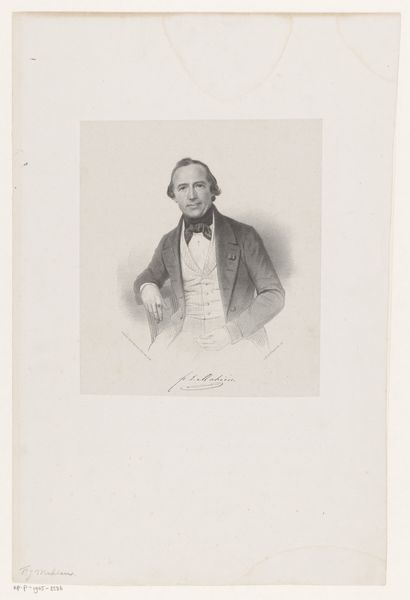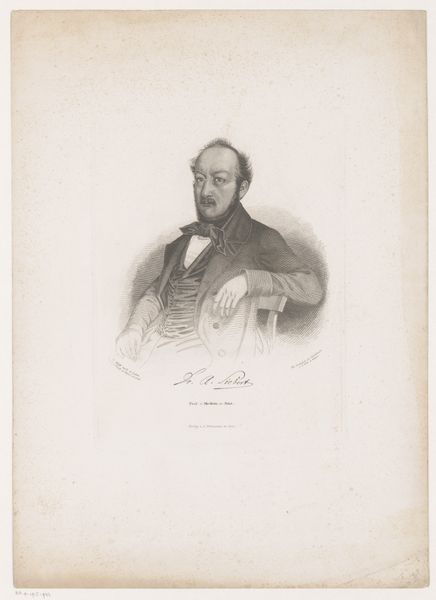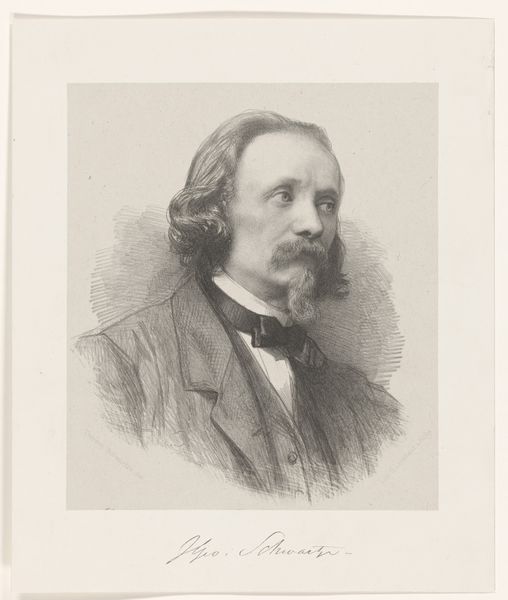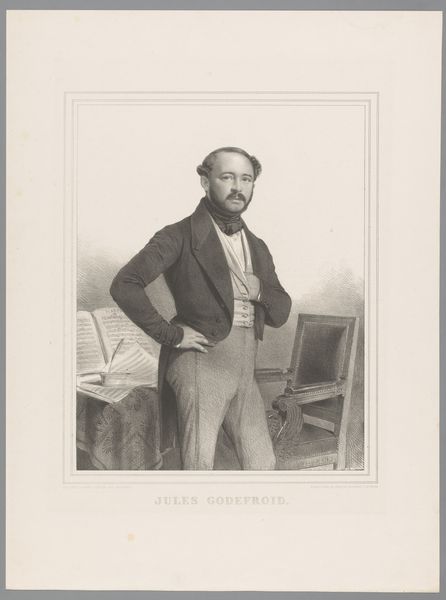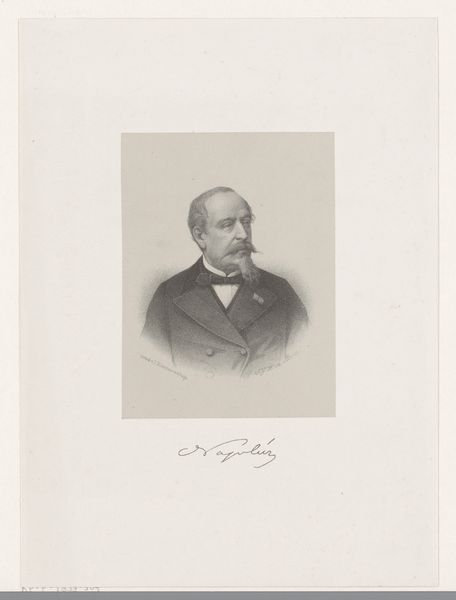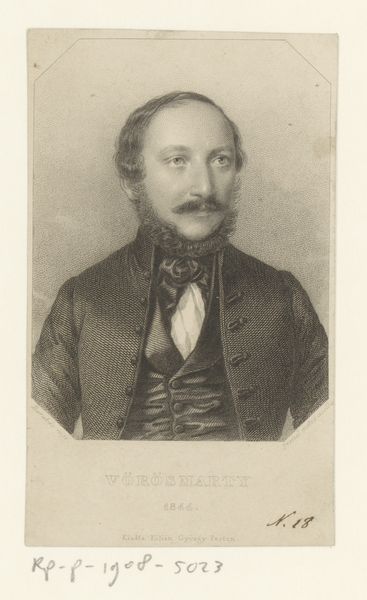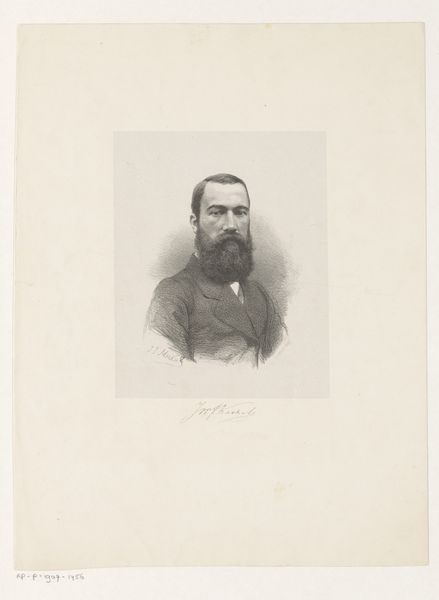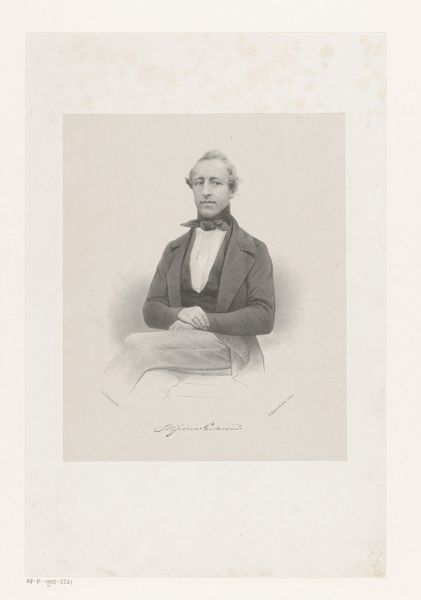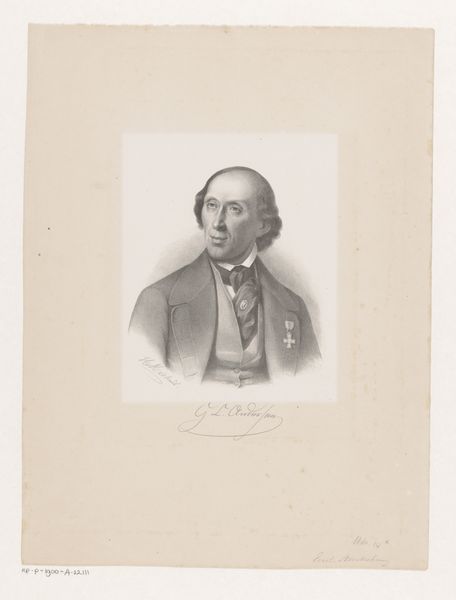
print, engraving
#
portrait
# print
#
pencil drawing
#
romanticism
#
portrait drawing
#
history-painting
#
engraving
#
realism
Dimensions: height 187 mm, width 137 mm
Copyright: Rijks Museum: Open Domain
Curator: We're looking at a print entitled "Portret van Constantin von Wurzbach," created by Carl Kotterba after 1818. The medium is engraving. Editor: My immediate impression is one of restrained power. The subject exudes a quiet confidence, conveyed through the careful rendering of his features and the elegant lines of his attire. The contrast seems muted, but the form is clearly defined. Curator: Yes, Kotterba’s skill is evident in how he uses engraving techniques to suggest different textures. Consider the fine lines used to depict Wurzbach's hair versus the broader strokes that give weight to his jacket. The print is an interesting document, produced at a time when reproductive technologies were becoming increasingly sophisticated, influencing both the art market and public perceptions of figures like Wurzbach. Editor: The formal choices absolutely serve that function. Look at how the artist has chosen to pose him. The relaxed yet upright posture, the subtle turn of the head, and even the lighting that catches his gaze—they all construct a persona of intellectual authority and refined sensibilities. It draws my attention to the formal structure, the implicit geometry which underscores his prominent stature. Curator: And it's important to remember Wurzbach himself. He was a notable Austrian scholar and bibliographer. So this isn't just any portrait; it's a carefully constructed image of a man of letters intended for circulation and consumption within a specific intellectual and social milieu. How were such images distributed, and what did they signify about the status of both artist and sitter? The production context matters greatly. Editor: I concur that his intellectual authority radiates in his assured bearing, underscored by how the dark jacket anchors him within the pictorial space, while the subtle details draw one's gaze inward to his face. Curator: Exactly. This was about constructing and disseminating a certain type of identity. So, engaging with this work involves understanding the socio-economic systems that shaped its creation and its impact. Editor: Precisely. Appreciating the material process lets us truly observe and study not just what’s being depicted, but how effective visual languages communicated those nuances and the inherent meanings and values they hold within themselves.
Comments
No comments
Be the first to comment and join the conversation on the ultimate creative platform.

